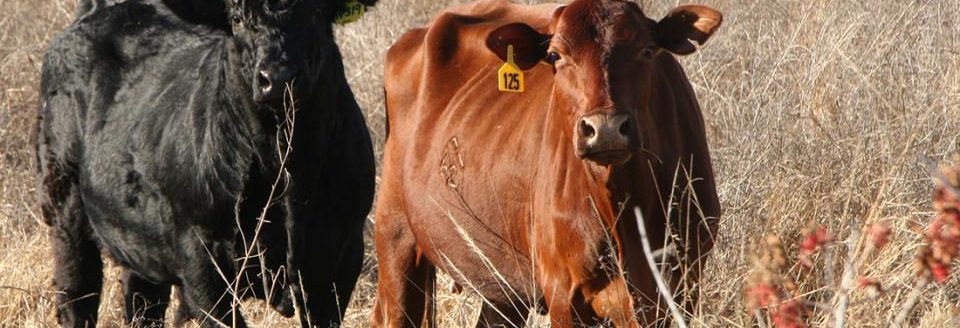KSU Beef webinar talks tools for making ranch management decisions during drought

Wyoming rancher and president of Custom Ag Solutions Brett Crosby recently gave suggestions for cattle producers when it comes to making real world ranching decisions during a drought. Crosby’s company works with federal and state agencies to educate agricultural producers about risk management and crop insurance, and to provide livestock risk management services via beefbasis.com.
Crosby said his family has been running livestock in the northern Bighorn Basin for 123 years and they’ve been through their fair share of drought conditions.
“Drought is something that we are always, always, always trying to manage and stay on top of,” he said. “There are a lot of different ways to deal with drought now that we didn’t have 20 years ago.”
Insurance for pasture, rangeland and forages are excellent choices, according to Crosby, and the Farm Service Agency has some good programs available too.
“But still, there are times when we have to wonder,” he said. “What are we going to do this year because we don’t have enough grass to feed them. And that’s not only a very stressful decision, it can become very complex very quickly.”
To start, know your profitability as a cow-calf producer. Know those details inside the income side of the operation when it comes to calf crop percentage. Consider calf prices, calf weights and pregnancy retention rates.
“I have had people telling me, ‘Well, my feed doesn’t cost me anything because I don’t have a mortgage payment,’” he said. “And my response is, well, yes it does. You just have two businesses. You have a landowning business that is subsidizing your cattle business.”
Feed is always going to cost a producer something and most often it’s going to be more than property taxes. Crosby said a producer can rent pasture land out to neighbors or those in need, but when he can’t it becomes a problem.
“If you can’t make more money running your own cattle than you can by renting your ground to someone else, then you are subsidizing your own cattle operation,” he said. “So a drought is going to affect all of these things.”
In a drought, more money is spent on fuel hauling livestock to different pastures and more on feed since Mother Nature isn’t providing grass. It’s going to cost more money and there will have to be more labor available to do these things to manage livestock during a drought. The calf crop is going to be affected too, because more than likely some cows will have to be sold. The calf price may be influenced too since the calves being sold won’t be at an ideal weight. Calf weights and pregnancy rates suffer during a drought as well, according to Crosby.
How do cattlemen begin to make the difficult decisions?
The first thing you need to ask yourself is what’s your endgame. Are you just trying to survive the short term or is there a legacy in mind? Or are you in a short-term pinch needing to get through or in it for the long haul and a drought can affect the long-term survivability of the operation.
Short-term solutions often have short-term results. Crosby pointed out that selling cattle prematurely or before they are ready to sell is almost like harvesting a crop a month early because you need to pay the fuel bill.
Crosby suggested starting to look at ways to optimize the calf crop with the number of cattle that have to be sold due to drought and the number that will need to be sold in the future. Then sit down and write down all the possibilities there can be when looking to solve a drought problem.
“You want to preserve the efficiency of your herd and you want to protect the factory,” he said. “That means the last thing you really want to do is start selling good cattle.”
Crosby suggested beefbasis.com, is one that his company created and collaborated with Kansas State University researchers and economists on in the early 2000s.
By definition, basis is the difference between the local cash markets and futures contract prices. This spread can be complex and can vary dramatically between weight classes and market locations from year to year.
According to the website, understanding the risk related to basis uncertainty, or “basis risk,” is essential to making effective use of price risk management tools such as Chicago Mercantile Exchange futures and options and forward contracts.
Sign up for HPJ Insights
Our weekly newsletter delivers the latest news straight to your inbox including breaking news, our exclusive columns and much more.
There’s often a large difference in price between cattle of different sexes, different weights and other traits. Crosby said the website has a number of tools available to help beef producers make decisions when facing a drought and the possibility of selling cattle or calves.
Other tools on the website can compare cost of gain and let producers see what the extra weights are going to do for their bottom lines. Again, producers need to use the information from the tools to decide if the sale of cows or early weaned calves will be the right financial decision during a drought.
“We know that we have some good years coming,” Crosby said. “We know that we want to try to do everything we can to protect that cow herd and avoid trying to try to sell the factory that’s going to produce this income for us.”
Kylene Scott can be reached at 620-227-1804 or [email protected].



